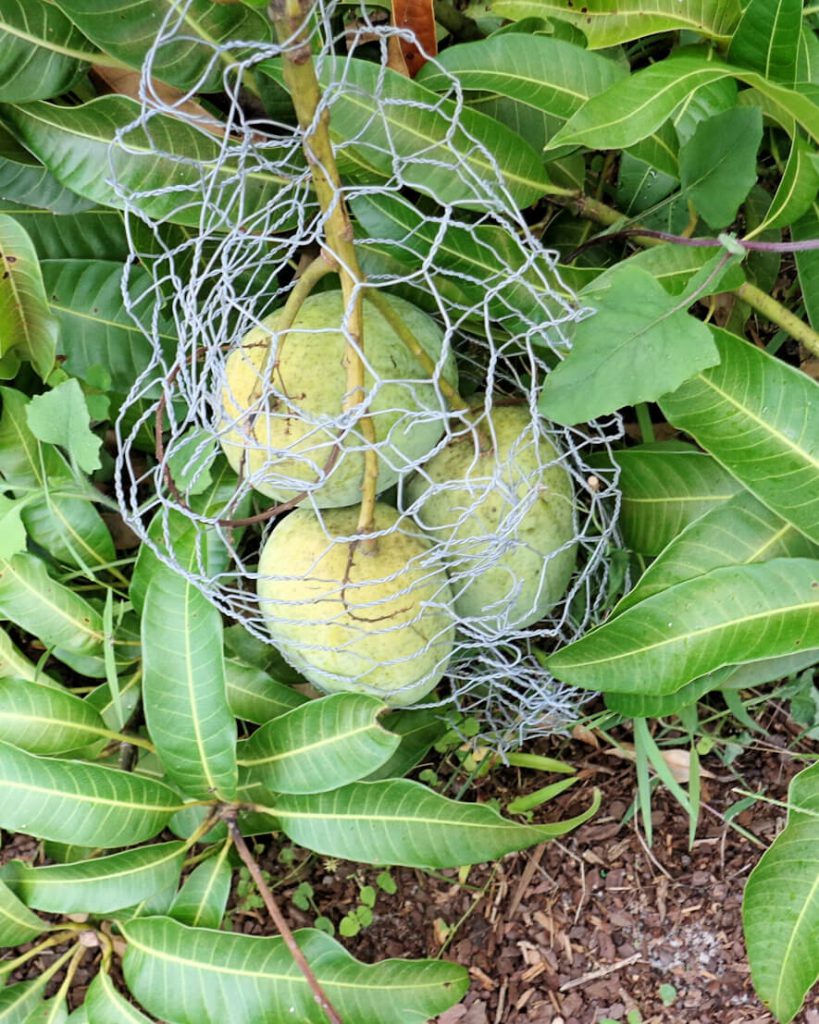
It looks to be a good year for mangoes. Locally, many mango trees are loaded with fruit promising a sweet June and July harvest. There is hardly any other tropical fruit that almost everybody likes. While mangoes are not suitable for everywhere, there are many sites near our coastal communities and other selected spots that are ideal for this “apple” of the tropics.
Mangoes have been cultivated by people for over four thousand years. They are important as a commercially available fruit and make an attractive evergreen landscape subject as well. Climate is perhaps the most important consideration when choosing to plant a mango. Mature trees can survive temperatures as low as twenty-five degrees F for a few hours with only minor injury resulting. Younger trees can take only twenty-nine to thirty degrees F. Fruit and flowers cannot withstand temperatures below forty degrees F for too long. This being the case, your best bet for long term, sustainable success is an area “relatively” close to the water. There are also natural “microclimates” here and there that offer protected, warmer-than-normal spots that are ideal for mango growth. I have seen multiple cases of mango trees growing north and east of us doing just fine in these microclimates – these are examples of exceptions. As the trees mature, their tolerance for cold weather gets a little better to some degree. Gardening, just like farming, has its risks. Who’s to say that we won’t get a cold spell some winter with a more severe freeze than normal? Even areas further south of us have to contend with this issue from time to time.
Selection of mango varieties will vary with your personal tastes and needs. Try the fruit of a named variety in season to select your favorite flavor and texture. Good varieties for home culture available at most local garden centers include those with a reddish-yellow skinned fruit such as ‘Haden’. Some with a greenish-yellow skin would include ‘Carrie’ and ‘Saigon’. Still other mangos have a pinkish, reddish-yellow skin color such as ‘Edward’ and ‘Glenn’. ‘Kent’ with a greenish, reddish-yellow skin and ‘Keitt’ with a greenish, pinkish-yellow skin are also recommended. Grafted trees will begin to produce in as little as three to five years. Mangoes will flower from December to April with fruit mature and ready to eat from May to September. It will take up to one-hundred and fifty days from flowering until the fruit is mature. Most of our mango harvest season occurs in June and July.
The fungal disease anthracnose is perhaps the most common pest problem. Flowers, leaves, and stems can develop spots, streaks and even fruit rots from anthracnose. This disease can be controlled with copper fungicide when used as per label directions. Fruit is also sometimes damaged by squirrels or raccoons and may need protection in the form of netting or chicken wire.
Mango trees will grow to be medium to large (thirty feet tall and higher) in size and can and should be pruned for ease of harvest and maintenance. Annual selective pruning can be completed right after harvest. Work to keep the tree around twelve feet tall. Mango trees maintained at this size can be planted twelve to fifteen feet between trees and away from buildings. Water well during establishment and during drought and fruiting. Fertilize about every three months after planting for the first year, and twice a year thereafter with any commercially available granular tropical fruit fertilizer that contains micronutrients. Mangoes will also benefit from foliar micronutrient sprays keeping in mind that this material can stain cement and stonework. Always read the label for proper application amounts and timing interval directions.
If you have the right spot, a mango could be in your future! For more information on all types of tropical and subtropical fruits suitable for growing in our area, or to ask a question, please visit https://www.facebook.com/CharlotteMGLifeline/. Ralph E. Mitchell is the Director/Horticulture Agent for the UF/IFAS Charlotte County Extension Service. He can be reached at 941-764-4344 or ralph.mitchell@charlottecountyfl.gov.
Resource:
Crane, J. H., Wasielewski, J. Balerdi, C. F. & Maguire, I. (2017) Mango Growing in the Florida Home Landscape. The University of Florida Extension Service, IFAS.
 1
1

Comments are closed.